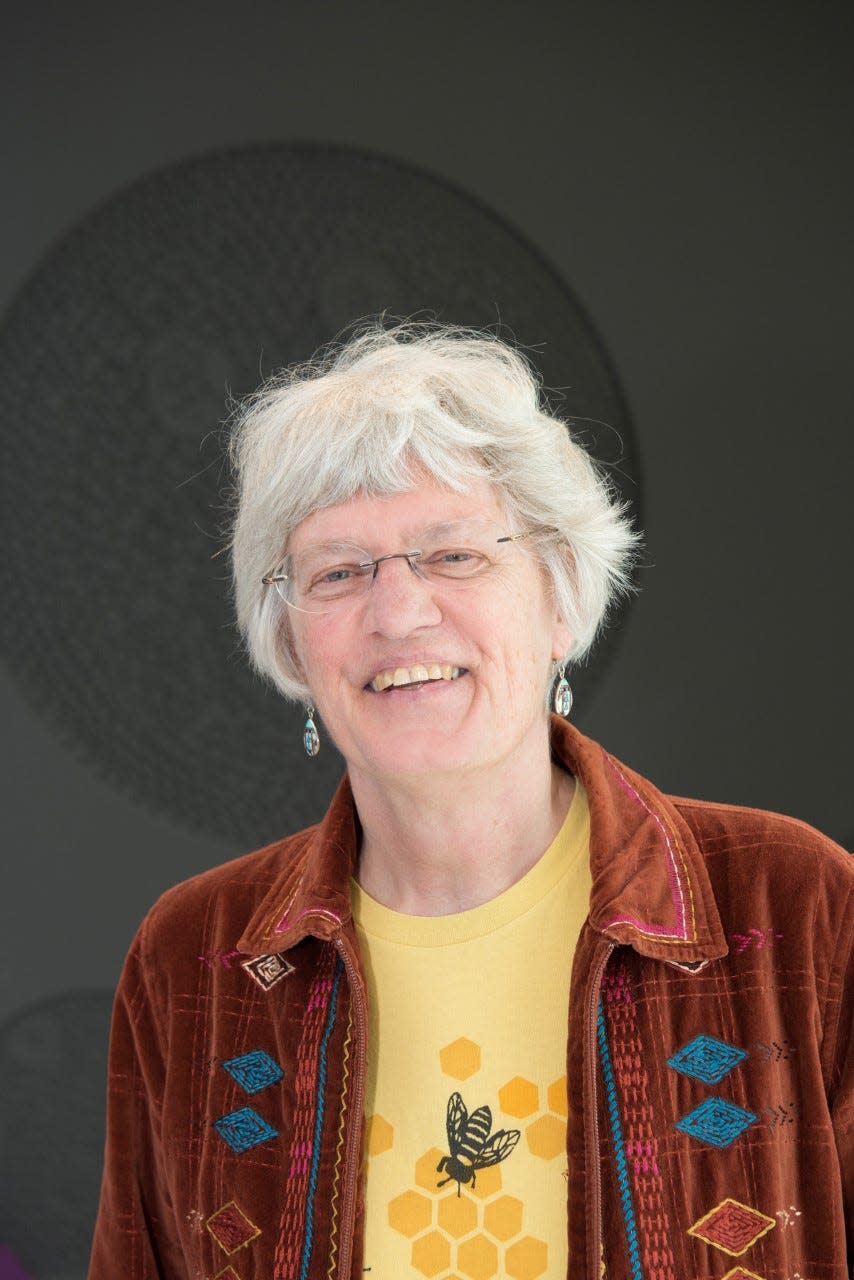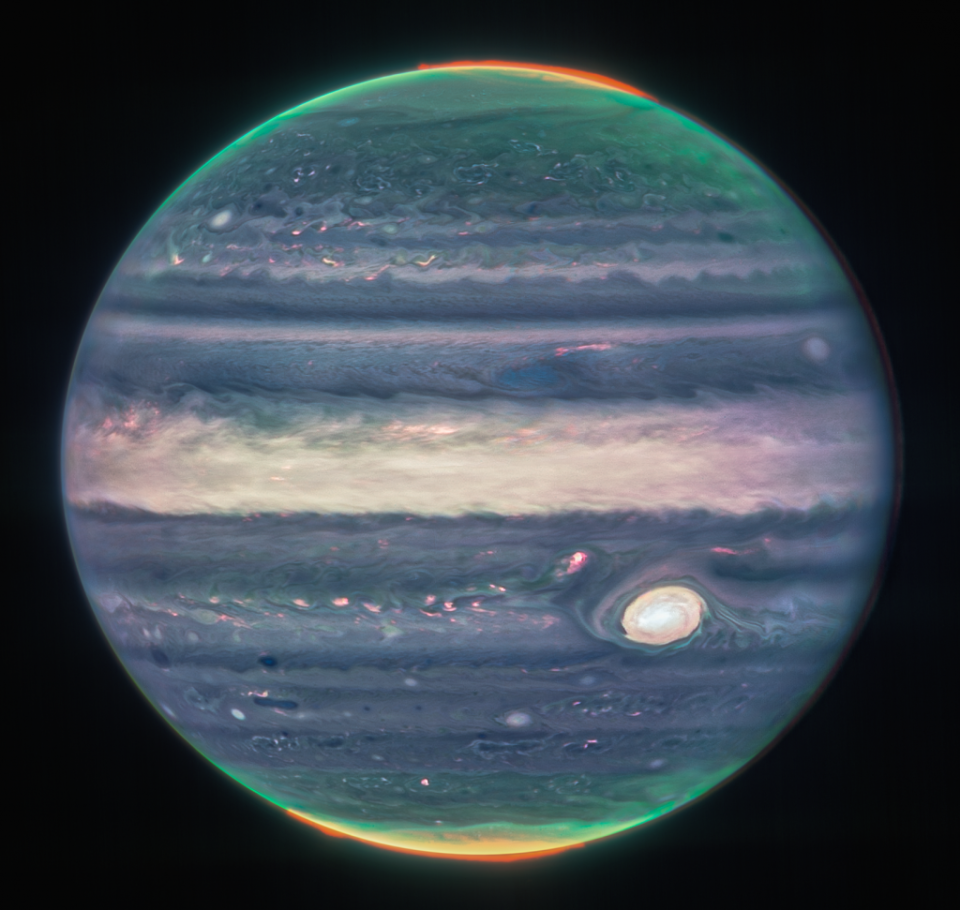How the James Webb telescope helps us get a clearer picture of Jupiter — and our universe
Jupiter is awesome. That's what the newly released images from the James Webb Space Telescope show us earthlings interested in space.
Thanks to researchers and new images from the James Webb Space Telescope, the largest, most powerful space telescope in the world, we now know even more about Jupiter.
Scientists believe Jupiter has 79 moons. And, according to NASA, its atmosphere is made up of cold and windy clouds of ammonia and water, which float in a gaseous atmosphere of hydrogen and helium, with no solid surface under its atmosphere.
Even more interesting, Jupiter’s Great Red Spot is actually a massive storm that is bigger than planet Earth and has been going for hundreds of years.
USA TODAY spoke about the new findings with Imke de Pater, a professor at the University of California, Berkeley, who also heads up the Jupiter observations team on the international mission managed by NASA, along with the European Space Agency and the Canadian Space Agency. Her conversation with Editorial Board member Carli Pierson has been edited for length and clarity.

Why is Jupiter awesome?
Just look at Jupiter and you see it's awesome. What is really amazing about the James Webb telescope is that we can see so much detail on Jupiter and at the same time we see this much fainter ring next to Jupiter, and you see it in the same picture – you see tiny moons around it and you see galaxies behind it.
We never thought of taking an image of Jupiter and seeing the whole universe behind it.
Secretary-general of the U.N.: 5 steps to help us kick our fossil fuel addiction and save Earth
Why study Jupiter?
So I have always been interested in Jupiter. But once bigger telescopes came online, for instance, the Keck telescope in Hawaii, I really started to use that telescope to look at Jupiter, its atmosphere, its rings and moons. And then Hubble Space Telescope came along.
We don't get the images the way you see them. We have to do a lot of processing. A citizen scientist, Judy Schmidt, has done most of the processing. You have to go back to the raw images we get, take the rotation out and then shift all the images until they fit on top of each other and then you can create an image like what you see here using filter.
Jupiter rotates once in 10 hours, but the features are all slightly shifted. There are strong winds in Jupiter's atmosphere.
Do you think it once harbored life, or its moons harbored life?
The moons you see here – Adrastea, Amalthea – we will look at them, too. It takes a lot of processing as well because they move as the images, the data, are taken. The data are taken over an hour. And Jupiter rotates on its axis over 10 hours, so things can be smeared.
We look at Io at the volcanic activity and also at Ganymede, and also at the winds.
I don't think Jupiter harbored life. Actually, the moons we study – Ganymede and Io – I don't think that they harbored life.
Opinion alerts: Get columns from your favorite columnists + expert analysis on top issues, delivered straight to your device through the USA TODAY app. Don't have the app? Download it for free from your app store.
But there is the possibility that Europa might have had life in the past. So, Europa has a very thick ice crust and below it is a water ocean. People have seen perhaps plumes coming up from the ocean onto the ice's surface. So, it's not impossible that there might be life, bacterial life.
I wouldn't dismiss anything out of hand. Europa isn't in our program, but it will be studied with the James Webb telescope.
Are there potential minerals or gasses on Jupiter that we can use here on Earth?
We definitely study gases, but not to capture it. But what is powerful with the James Webb telescope is that we combine the images on many different wavelengths. We can determine the temperature at each level and which gas, or how much of different gases are there. That will teach us a lot about the chemistry in Jupiter's atmosphere and even the aurora that you see.

What did you learn from researching Jupiter? Why is it important?
It's part just curiosity. People are curious about the universe, planets in our solar system, and ultimately about life in our solar system. Jupiter tells us about how our solar system formed and with that you get more into the real of life. So, it's the formation of our solar system and how this leads to life in our solar system and the universe.
Surviving wokeness: Will Florida be consumed by wokeness now that DeSantis' Stop WOKE Act has been blocked?
We are learning about how our own solar system formed. That is a picture that is still changing all the time, but presumably, rocky and icy material clumped together and slowly grew. Once you got a big enough planet or proto-planet it trapped gases from the environment. So we think over time the large planets grew and then the smaller ones like Earth took somewhat longer.
The basics of how our solar system formed but the details of where the materials came from, that is something we are still working on. The research will help us get there.
What are your burning questions about Jupiter?
We are really dying to find out what the dynamics in Jupiter's atmosphere are. We also want to find out more about storm systems: How do they start and rise up in the atmosphere? That is a question we hope the James Webb will help us decipher.
More by Carli Pierson:
Biden's student loan forgiveness is a good start, but it falls short for borrowers like me
My toddler with asthma is going back to school vaccinated. That's reason to be grateful.
What you learn when your dad was the first Black secretary of the Army
Carli Pierson, a New York licensed attorney, is an opinion writer with USA TODAY, and a member of the USA TODAY Editorial Board. Follow her on Twitter: @CarliPiersonEsq
You can read diverse opinions from our Board of Contributors and other writers on the Opinion front page, on Twitter @usatodayopinion and in our daily Opinion newsletter. To respond to a column, submit a comment to letters@usatoday.com.
This article originally appeared on USA TODAY: What James Webb telescope images tell us about Jupiter

